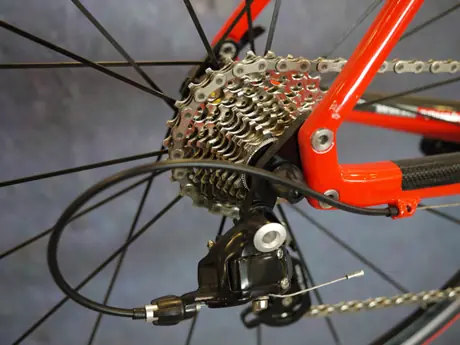
Triathletes new to cycling often wonder about two things: how fast should I pedal and, with so many choices, what gear should I ride in?
Deciding how fast you should pedal is the easier of the two questions. The speed you turn the pedals is called cadence. You measure cadence by counting how many times your right (or left) leg completes a full revolution in one minute. Exercise bikes and some spin bikes may display this number for you.
More: Cycling Cadence in Training and Racing
Unless you have a bike computer on your bike you may have to count it yourself. Do this in a safe area where traffic and other hazards are at a minimum. Using a watch that displays seconds, count each time your leg comes up on the pedal stroke for 30 seconds. Now multiply this number by two to get your cadence.
Under most conditions it's usually most efficient to pedal at around 90 revolutions per minute (rpm). Is 65 okay? I would say that's a bit too slow. When you turn the pedals at such a slow cadence you fatigue pretty quickly. What about 75 per minute? You're getting closer and that would be much better.
But once you get into the low to mid 80 rpm range you're pretty close to the sweet spot. Pedaling at this cadence for long periods of time takes practice, so be patient and keep at it.
What if it's just too hard to pedal that fast?
More: Tips to Boost Your Cycling Pace
If it's too hard to pedal at 80, 85 or 90 rpms then you're probably using a bike gear that's too high. Shift into a lower gear to make it easier for you to turn the pedals faster. For new cyclists, it seems complicated because of all of those gears/sprockets/metal-toothed thingys on your bike.
So here's a breakdown:
- Those big, metal-toothed sprockets next to your right pedal are called "chainrings". Most road bikes have two of these but some have one (those are called singlespeeds) or as many as three (better for beginners).
- The group of sprockets on the back wheel is called a "cassette".
- Each individual ring in the cassette is called a "cog".
More: A Breakdown of Bike Gears
You have two shifters on your handlebars to change these gears. The left shifter changes the chainring gears next to your pedal. The right shifter changes which cog you are using in the rear. The chainrings make the biggest change in difficulty when you change these gears.
In other words, if you move the left shifter you make a big jump, making pedaling either much easier or much harder. If you move the right shifter you make smaller jumps up or down; the right shifter allows for more of a fine-tuning adjustment.
More: Bike Shifting 101
- 1
- of
- 2



Discuss This Article